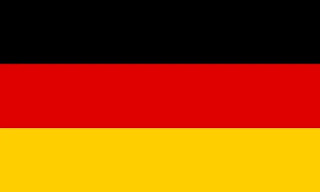Historical Facts: Ferdinand Magellan's Expedition
This was based on Reader's Digest: The Story of the Filipino People (Part 3) by Jose S. Arcilla.
Magellan's Early Expeditions and the Way to Asia
There was a man named Ferdinand Magellan. He was born in Portugal to the lower part of the nobility. In 1511, Magellan explored India, Malacca, and Indonesia.
Now, here's the problem. To go to Asia, he would have to go around Africa. In 1492, Christopher Columbus, an Italian explorer working for Spain, explored the Americas. To the Europeans, it was a new continent. Since most explorers knew the world is round, they knew Asia would be on the other side.
From Portugal to Spain
One time, Magellan was fighting the Moors in North Africa. He won, and asked for a raise from King Manuel of Portugal. But the king declined.
Now, to understand this next part, you have to know the rivalry between Spain and Portugal over colonization. Spain's first colonies were in the Americas, while Portugal wanted to get to India. However, when Portugal heard of the rich Americas, and Spain heard of the Spice Islands (in modern-day Indonesia), they became rivals. Now, look. Ferdinand Magellan was not given the raise. He was insulted, and wanted to get revenge. How did he get revenge? By joining the enemy, which was Spain!
The Expedition Begins
Magellan used his plans for Portugal to serve Spain. He already had an outline for an expedition, and had met many men like Bishop Juan de Fonseca (the head of the Royal Council of the Indies), who helped gain him approval. In 1518, the contract for the expedition was signed.
On September 20, 1519, Magellan's crew departed. His father-in-law warned him that the Portuguese were going to attack, so he sailed closer to the African coast.
There were several mutinies (rebellions against the captain). But Magellan finally landed in Argentina after almost 30 days. He crossed a very tiny strait to get to the Pacific. They named it the All Saints' Channel (because they crossed it on All Saints' Day), but it's now called the Strait of Magellan.
Magellan Reaches the Philippines
After crossing, Magellan sailed up on the Pacific. In 1521, he reached the Homonhon in present-day Philippines. At this point, the Philippines was not yet one country and divided into several barangays, which are the smallest political units.
However, later on, Magellan made a crucial mistake. In one area called Mactan, a man named Lapu-Lapu had a dispute with Zula and Rajah Tupas, who were allied, over leadership of the area. Zula and Rajah Tupas allied with the Spanish and fought against Lapu-Lapu in the Battle of Mactan. This was an infamous mistake. Lapu-Lapu's forces won, and Magellan was speared on the beach of Mactan. Lapu-Lapu is considered the first national hero of the Philippines, despite the fact that the Philippines did not exist as a political entity back then.
As a side note, one ship called the Victoria reached the Spice Islands and circumnavigated (meaning sailed around) the world. Maybe I should write on that soon.
Magellan's Legacy
Despite dying at Mactan, Magellan had a lasting legacy on colonialism. Magellan's expedition proved that the earth is round. Eventually, another explorer named Miguel Lopez de Legazpi returned to the Philippines in 1565 and made it a Spanish colony. (The Philippines remained a Spanish colony from until 1898!)
End
So, what have we learned today? We learned that Magellan wasn't originally Spanish, that he made a crucial mistake at Mactan, and that he had a lasting legacy in colonialism. Thanks for reading! Bye!

